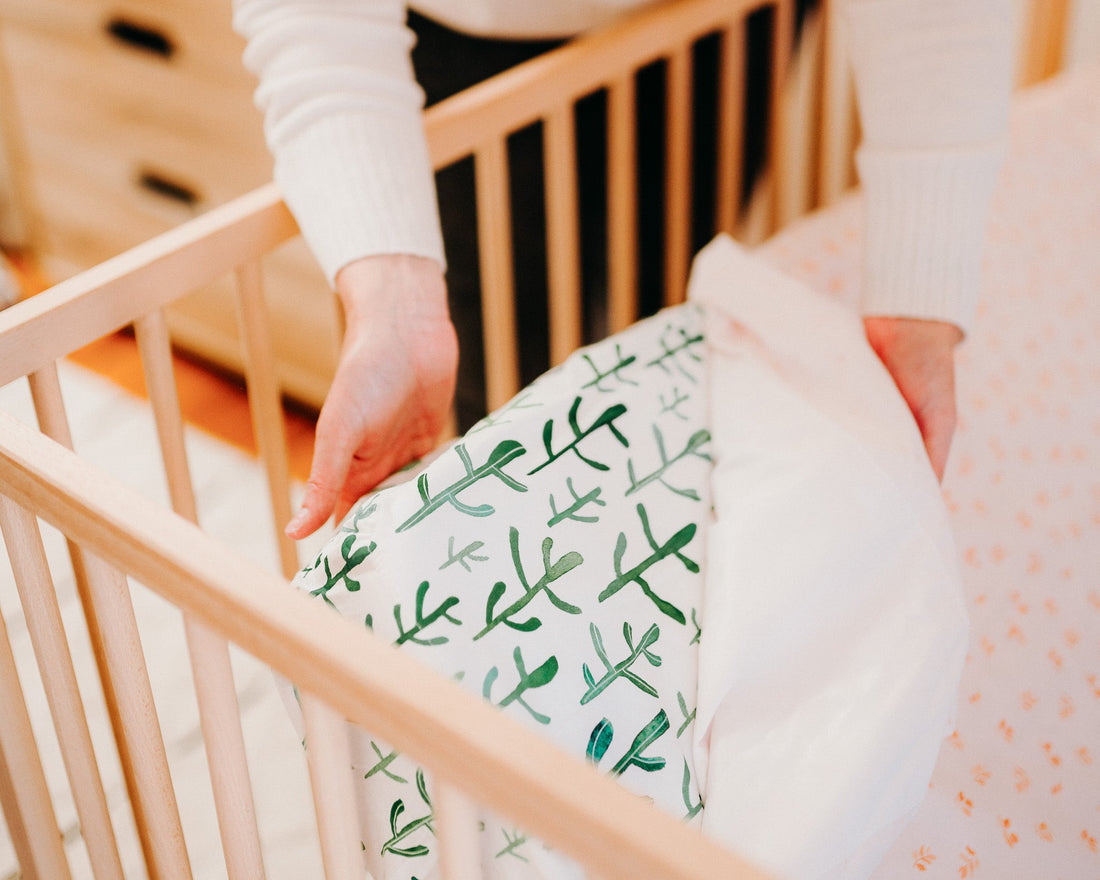99% of babies spit up milk on their mattresses. It can range from a tiny dribble to a prize-winning vomit, but did you know that any amount can cause mould and mildew to grow inside the mattress? And allergens like mould can cause a baby’s airways to spasm, leading to a cough or difficulty breathing?
We’re not trying to scaremonger you into buying our waterproof sheets here. We think it’s important to educate our community because we don’t see enough people talking about this problem that affects all mums, whether you’re a first-timer or on baby number two, three or more.
The good news is that you can take steps to help avoid mould and make your baby's sleep environment cleaner and safer.
Mould from spit up milk grows faster than a pile of dishes in the sink
You know the scene. Bub is fed, settled and sleepy. You gently pop them down into the crib and carefully tip-toe towards the door. Just as you reach for the handle, you hear that all-to-familiar sound of a burp. What you don’t see is the spit-up seeping into the cot sheet and through the layers of the mattress.
Within 24 to 48 hours, in a warm dark environment mould will start to grow. It reproduces by spores - tiny, lightweight seeds that thrive on damp, dark and humid surfaces. Mould digests organic material, like the cotton within your baby’s mattress, eventually destroying the material it grows on before spreading further.
But are waterproof sheets breathable?
It depends on the materials used. Parents may believe that waterproofing a baby’s sleep surface makes it less ‘breathable’ and that by avoiding waterproofing, a baby can breathe through the surface and even into the interior of the mattress. The problem with this is that firstly, it isn't true and secondly hygiene is then sacrificed.
Breathability of a mattress or bedding refers to the how well the product used will allow movement of air and prevent heat trapping, allowing a baby to regulate their temperature as needed. It is not an indicator of whether or not an infant can breathe air through the product or a way to determine suffocation risk.
Safe sleeping guidelines state: “A safe mattress is the right size for the cot, firm, clean, in good condition and is placed flat.” They also say, “always make sure that the waterproof mattress protector is strong and a tight fit.” Safe sleeping organisations overseas go further to actually recommending that you “should use a firm and flat mattress that is protected by a waterproof cover.”
Bacteria and mould grow when milk, water, urine, fecal matter or other liquids are absorbed into the interior of a mattress. It is released into the air—contributing to poor indoor air quality. Poor air quality significantly impacts a child’s health, including decreased lung size and function and asthma.. Babies and children are particularly vulnerable to air pollution because their lungs are still developing.
Our sheets use a polyurethane laminate (PUL) film that is permeable to air. This means that it allows the flow of air molecules to pass through its microscopic holes. However, larger molecules like water are too big to pass through, so the film is waterproof. PUL is used in modern cloth nappies and medical-grade textiles and dressings. It is totally stable and safe for babies and children's products. It contains no BPAs or other nasties.
Tips to keep your baby’s mattress mould-free and hygienic
Invest in waterproof sheets
We spent years sourcing the best high-quality materials that can easily absorb up to 100mL of fluid, more than enough to cope with nappy leaks and milk spills. They’re also made to withstand frequent washing while remaining waterproof, beautifully soft and crackle-free. We recommend buying two to three sheets and doubling them up on your mattress, so you can do those middle-of-the-night changes in a flash.
Change bedding immediately after a spit-up or leak
Not just so mould or bacteria doesn’t have time to grow, but this also helps avoid baby’s skin becoming irritated by sleeping on damp patches. Wash baby’s bedding at a minimum of 40 degrees on a long wash. If you’re using our sheets, they’re designed to be thrown in with the rest of your laundry and don’t require additional soaking or stain removers. Read the care instructions.
Prevention is better than cure
Whatever it says online about cleaning a mouldy mattress, it’s actually impossible to be sure you’ve removed all spores with any at-home solution. The most effective thing you can do is regularly inspect your baby’s mattress—both on top and underneath and prevent any milk or fluids seeping through in the first place. And while we happen to think our waterproof cot sheets are the best out there, we’re honestly happy as long as you are using any waterproof sheet or waterproof mattress protector!
If you learned something new here, we’d love you to share this article with your mum-friends so we can keep our babies' sleep environment safer.

